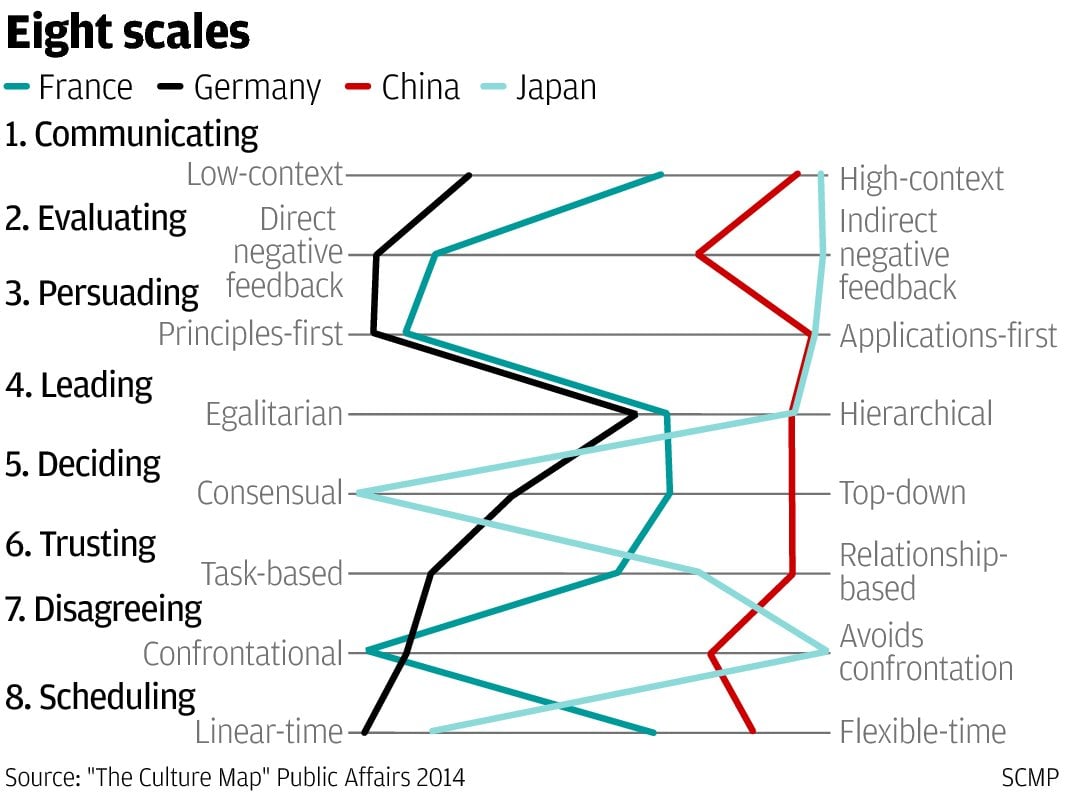The most important topic in this class was the
Metaphors, because it is an easier way to understand or to explain how a
culture behaves by supplementing dimensional approaches, and that way improving
the interaction with them. With the Use of a metaphors we can give direct clue
about essential features that describes the culture, for example we had the
case of the Spain bullfight, as a way to describe the Spain culture, their
traditions and likes, it shows how the collectivism is directed to small groups
like the family, friends, town or region, showing in that way the shared need
for defense, so team work is considered as something natural. It also explains
the importance of trusting the other with the “moment of truth” given to the
matador when he is preparing for the kill; the dominant values in the culture
are caring for others and the quality of life. The bullfights show the
emotional and passionate nature they have; they like to live in the moment
without a great concern about the future. Is important to highlight that there
are other ways to describe or try to understand a culture, this is my what we
know as criticism, one way is the most common one which is stereotyping, known
as the action of adopting a thought about a specific type of individual, for
example, all the Japanese people are shy (even do not of them may behave that
way). The other way is just creating a thought or image by what others have experience
and described to us, for example a person told me not to give gifts to Germans
because they will get angry, so I created that image in my head without knowing
it was truth or not, or people that goes to the India and then says they are
very dirty, so you create or adopt that image or thought in your head.
My research question is to explain a Little bit deeper
the Eight-scale tool for mapping cultural differences by Erin Meyer, in order
to improve our knowledge when negotiating.
The first scale is communicating, in which the high
context and the low context plays an important role. In low context the
communication is direct, they say the things how they are, and they are
precise; while in the high context the message is implicit, so more is left to
interpretation. The second scale is evaluating, this measures a preference for
frank versus diplomatic negative feedback, it means giving the feedback or criticism
in an honestly or direct way, or in a soft or indirect way. The third step is persuading, so you need to understand
how they balance holistic and specific thought patterns, which can be based on
the philosophical, religious and educational assumptions and attitudes that
each culture has,so the principles first and applications first are really important to understand the culture decisions or thoughts. The fourth step is leading; this step is based on the degree
of respect that is shown to authority figures, so it is important to understand
if the culture is a hierarchical culture or an egalitarian one.
The fifth step is deciding, it is the degree to which
a culture is consensus-minded, so you have to understand if the decisions are
taken in a democratic way or just by unilateral decisions. The sixth step is trusting,
in this step is important to have clear the differentiation between the
cognitive trust (task based) and the affective trust (relationship based), in order to identify which kind of
trust is being built between you and the culture. The seventh step is
disagreeing, this step is important to have a measure between tolerance for
open disagreement, looking to avoid the confrontation and the inclination to see this situation as helpful or
harmful to the relationships, being confrontational. The last step is scheduling, this step try to analyze
the degree between the quantity of value that is placed on operating in a
structured, linear time schedule versus a flexible time schedule.
http://www.scmp.com/business/economy/article/1518529/mapping-global-cultural-differences-offers-advantages-business
http://www.scmp.com/business/economy/article/1518529/mapping-global-cultural-differences-offers-advantages-business

No hay comentarios:
Publicar un comentario